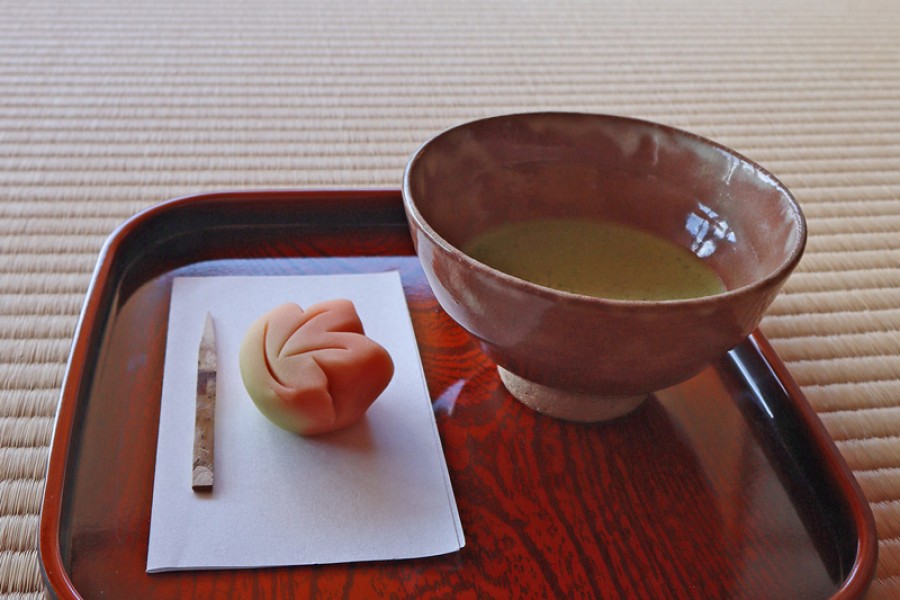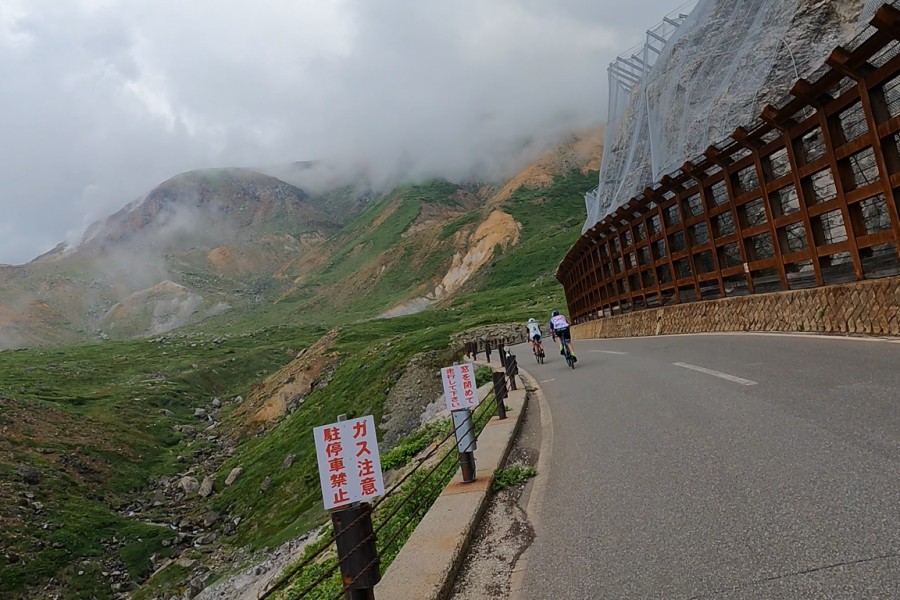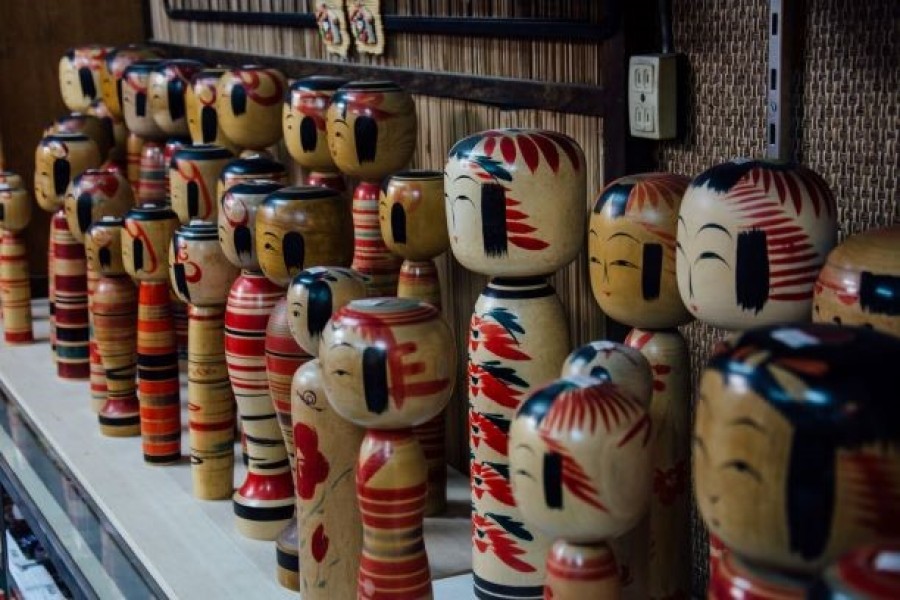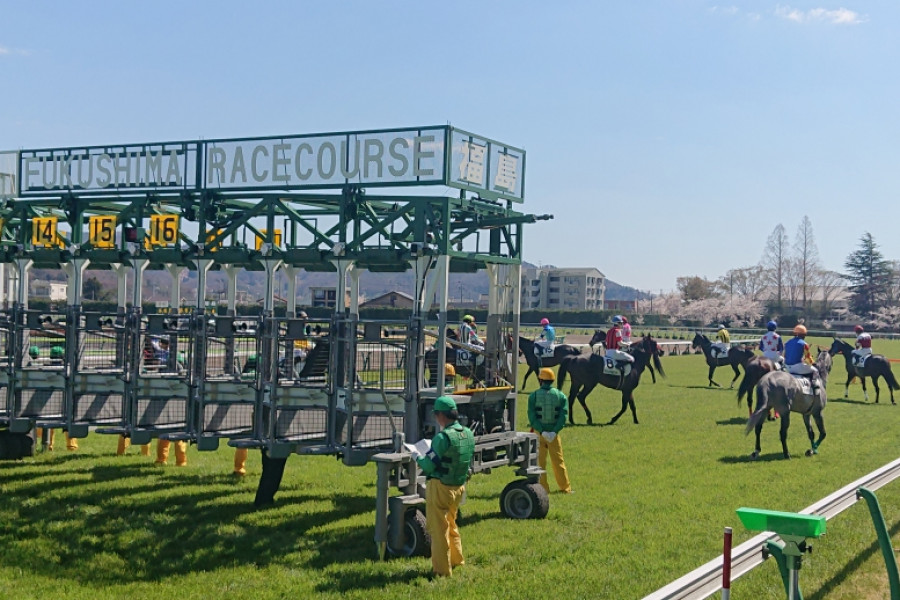
Green Tea Experience at Suirakuen Garden
Try matcha green tea in a traditional tea house in Suirakuen Garden, located inside Nanko Park. Suirakuen Garden is also a popular place to visit for its fall foliage.

The Bandai-Azuma Skyline is one of the top cycling routes of Japan!
The route brings cyclists through dense green forests to volcanic terrain and sweeping views of Fukushima city and the volcanic peak of Mt. Kofuji, or “Little Fuji”. In autumn this course is warmed by vibrant autumn leaves, that make for a magical ride!
Fukushima has routes for cyclists of all levels!
Click here for more information about Cycling Courses and Events in Fukushima!
(Click here to read our blog about cycling the scenic Bandai-Azuma Skyline!)
| Website | https://fukushima-guide.jp/discover/bandai-azuma-skyline/ |
|---|---|
| Contact | Fukushima City Tourism & Convention Association (+81) 24-563-5554 fukushima.guide@f-kankou.jp |
| Best Season |
|
| Parking | Jododaira Parking Area (Paid parking) |
| Entrance Fee | Free |
| Access | Fukushima City, Fukushima Pref. View directions |
|---|---|
| Getting there | By Car: 30 min from Fukushima-Nishi I.C. exit off Tohoku Expressway (Enter via Takayu Toll Gate) |

Try matcha green tea in a traditional tea house in Suirakuen Garden, located inside Nanko Park. Suirakuen Garden is also a popular place to visit for its fall foliage.

This souvenir shop sells a large variety of Tsuchiyu Onsen local products, the most well-known - of course - is the Tsuchiyu Kokeshi dolls. Tsuchiyu Kokeshi wooden dolls are known for their peculiar expressions. Matsuya Souvenir Shop even includes a kokeshi workshop, where an artisan creates kokeshi right before your eyes. For a particularly unique experience, you can paint your own Kokeshi Doll!

A rural landing field located 10 km Northwest of central Fukushima City. Starting with the Azuma Mountain range, the beautiful mountain vistas surrounding this massive location will leave you mesmerized. In addition to aircraft take-off and landing practice, it is possible to use the Fukushima Sky Park for various events. It is widely used for music events, automobile and motorcycle test drives, and a test venue for public organizations.

Ebisu Circuit – revered as a drift racing paradise – is visited every year by lots of international visitors. Ebisu Circuit’s ‘Drift Taxi’ experience lets you ride as a passenger in a special drifting car while a professional Drift School Teacher speeds around the circuit! Booking and more information here.

Ebisu Circuit – revered as a drift racing paradise – is visited every year by lots of international visitors. Ebisu Circuit’s ‘Drift Taxi’ experience lets you ride as a passenger in a special drifting car while a professional Drift School Teacher speeds around the circuit! Booking and more information here.

The only Japan Racing Association racecourse in the Tohoku region. Enjoy the excitement of the seasonal races held during Spring, Summer and Winter, as well as the traditional Tanabata Prize in July. The racecourse also has other areas for enjoying yourself, including a children's play area and athletic facilities, making it a great place to come with the family.

A rural landing field located 10 km Northwest of central Fukushima City. Starting with the Azuma Mountain range, the beautiful mountain vistas surrounding this massive location will leave you mesmerized. In addition to aircraft take-off and landing practice, it is possible to use the Fukushima Sky Park for various events. It is widely used for music events, automobile and motorcycle test drives, and a test venue for public organizations.